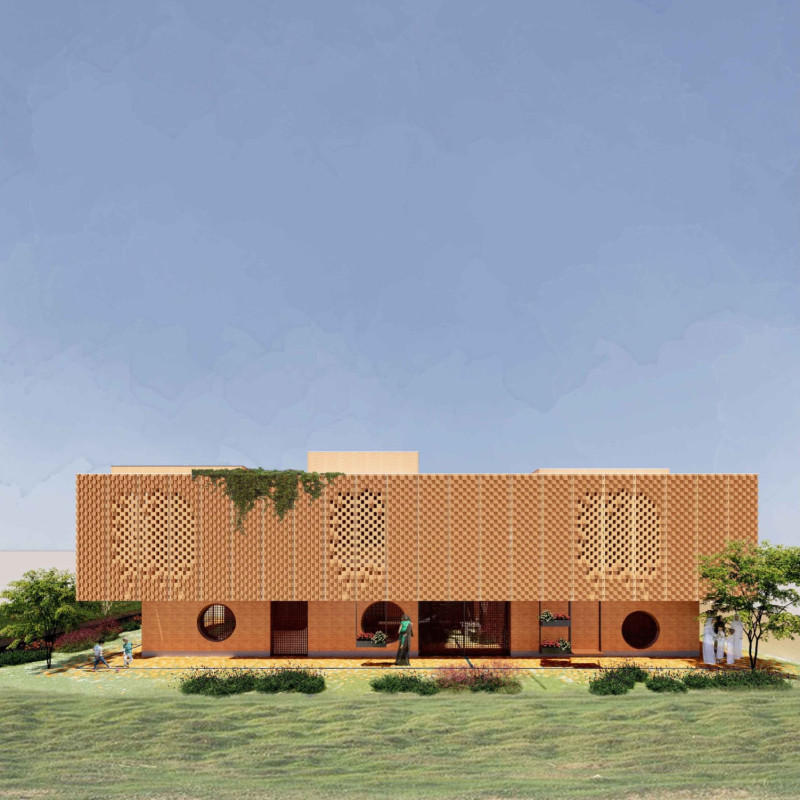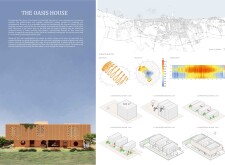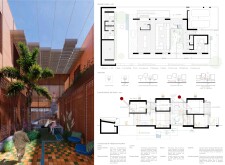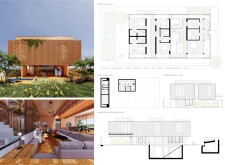5 key facts about this project
### Project Overview
The Oasis House is situated in Dubai, an urban center defined by its desert environment and dynamic growth. The project aims to harmonize modern building techniques with traditional architectural principles, notably emphasizing sustainability and respect for cultural context. The design intent is to create a living space that acts as an oasis, providing refuge from the harsh climate while utilizing locally sourced materials and climate-responsive strategies.
### Spatial Integration and Privacy
The layout of the house is strategically developed to facilitate both privacy and communal interactions, featuring distinct zones for various activities. A central open courtyard serves as the heart of the residence, promoting outdoor living and a connection with the natural surroundings. The design incorporates principles from traditional Arabic architecture, enhancing the residential experience through a thoughtful integration of indoor and outdoor spaces. The modular construction techniques allow for future flexibility and customization, catering to individual needs without compromising architectural integrity.
### Material and Climate Considerations
The construction prominently features rammed earth and adobe brick, which contribute to the thermal efficiency of the structure while aligning with local building practices. The use of a permeable roof canopy enhances passive cooling, allowing sunlight and rain to filter through. Additional elements such as solar collectors reinforce the commitment to renewable energy.
The meticulous orientation of the house optimizes exposure to cooling breezes and mitigates direct sunlight, ensuring comfort throughout the year. The landscaping incorporates native flora, fostering a biophilic environment and enhancing ecological integration. This comprehensive approach to material selection and design principles not only addresses the climatic challenges of the region but also exemplifies an innovative response to contemporary living demands.






















































